Unlocking Business Growth with Effective CX Management Frameworks
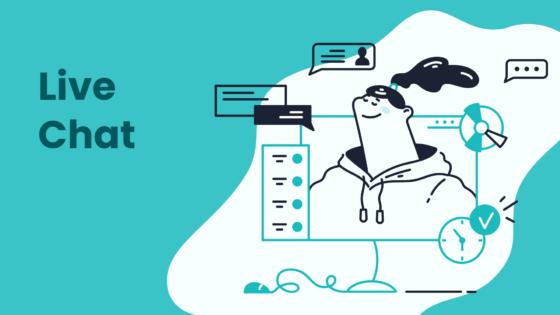
Effective cx management acts as a catalyst for business growth. Companies that invest in customer experience management frameworks see measurable results in loyalty, retention, and revenue. For example, research shows that a 5% increase in customer retention can boost profitability by up to 95%, while 84% of companies improving customer experience report higher revenue. Sobot leverages its customer experience management framework and Sobot AI to unify contact channels, enabling seamless interactions and fostering customer-centric cultures. The following chart demonstrates how customer experience directly influences key business metrics:
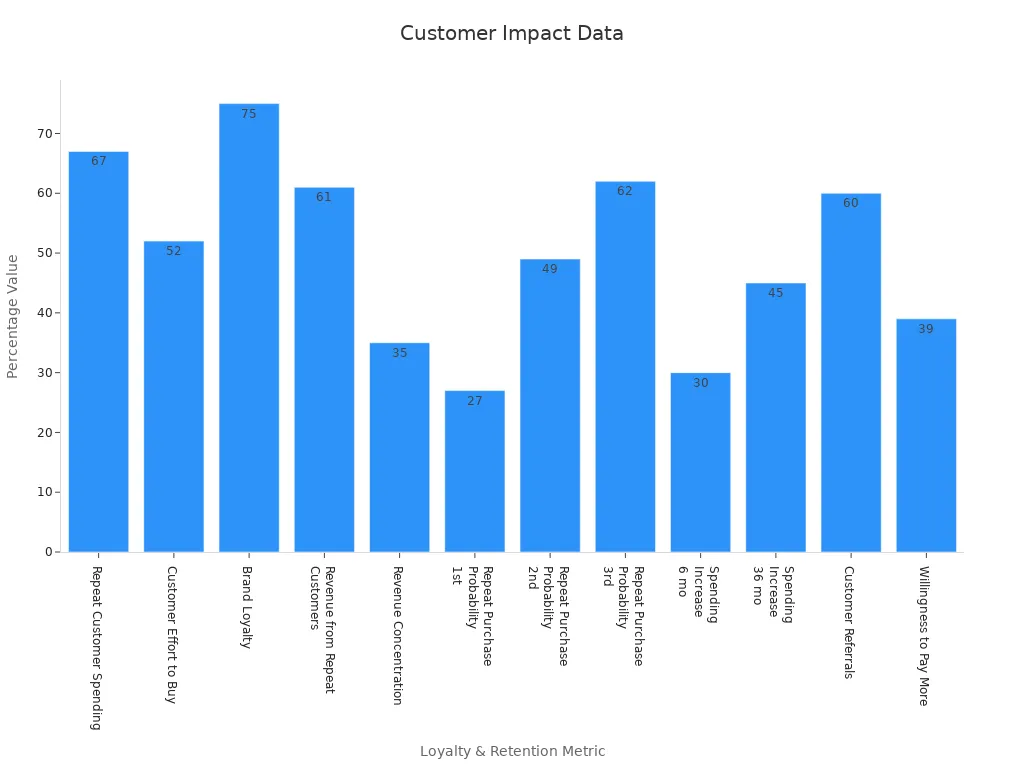
Business Impact of Effective CX Management

Loyalty and Retention
Effective cx management builds strong relationships between brands and customers. Companies that invest in customer experience management see higher customer satisfaction and loyalty. Studies show that service quality, employee behavior, and communication management all influence satisfaction, which leads to repeat purchases and brand advocacy. A 2021 study found that customer satisfaction and loyalty act as key drivers for organizational performance. Businesses that focus on the customer journey and use tools like Sobot’s omnichannel solutions can track and improve every touchpoint. This approach reduces churn and increases customer lifetime value. Metrics such as retention rate and churn rate help measure the success of customer experience management in fostering loyalty.
Companies with mature customer experience management strategies are over six times more likely to exceed retention targets.
Revenue Growth
Customer experience management directly impacts revenue growth. Companies that excel in effective cx management achieve higher conversion rates, more upselling, and increased referrals. For example, a one-point improvement in the CX Index can lead to millions in additional revenue in industries like hospitality. The table below highlights the revenue impact of strong customer experience management:
| Metric / Finding | Description | Impact on Revenue Growth |
|---|---|---|
| CX Leaders vs Laggards | 14% higher total growth rate | Significant revenue advantage |
| Industry-specific Growth | Retail leaders outperform by 26% | Consistent CX impact |
| Revenue per CX Index Point | $65 million per point in hotels | Direct financial gain |
Sobot Live Chat helps businesses increase conversion by 38% through precise profiling and tailored service, demonstrating how technology supports revenue growth. Companies that measure customer satisfaction and Net Promoter Score (NPS) can attribute financial value to each improvement.
Competitive Advantage
Customer experience management provides a clear competitive edge. Research shows that 22% of customers value customer experience over price. Brands that deliver seamless, personalized experiences stand out in crowded markets. Companies like OPPO have used Sobot’s solutions to integrate channels and improve customer satisfaction, resulting in a 57% increase in repurchase rate. Positive customer experiences drive loyalty, advocacy, and long-term profitability. As digital channels expand, effective cx management becomes essential for differentiation and sustained growth.
Customer Experience Management Frameworks
A customer experience management framework provides a structured approach for organizations to design, deliver, and measure every interaction with their customers. This framework acts as a blueprint, guiding companies to create consistent, high-quality experiences that drive loyalty and business growth. Companies use these frameworks to align their customer experience strategy with business goals, ensuring every department works together to meet customer needs.
Key Elements
A successful customer experience management framework includes several essential components. These elements help organizations understand, measure, and improve customer experience at every stage of the journey.
| Key Element | Description |
|---|---|
| Customer Effort Score (CES) | Measures how easy it is for customers to complete tasks or resolve issues. Lower scores mean better CX. |
| First Contact Resolution (FCR) | Tracks the percentage of issues solved on the first contact. Higher rates show efficient support. |
| Net Promoter Score (NPS) | Gauges customer loyalty and the likelihood of recommending the brand. |
| Customer Satisfaction (CSAT) | Measures satisfaction with specific interactions or touchpoints. |
| Customer Retention Rate | Shows the percentage of customers who continue doing business over time. |
| Customer Lifetime Value (CLV) | Calculates the total expected revenue from a customer throughout their relationship. |
| Churn Rate | Indicates the percentage of customers leaving the brand. Lower rates reflect higher satisfaction. |
| Customer Journey Mapping | Visualizes all customer interactions to identify pain points and improve experience. |
| Continuous Feedback Loops | Collects and analyzes customer feedback regularly to drive improvements. |
| Integration Across Departments | Aligns all teams and touchpoints for a consistent customer experience. |
| Strategic Goal Setting | Connects CX objectives with business goals using measurable targets. |
| Customer-Centric Culture | Encourages empathy and prioritizes customer needs across the organization. |
| Innovation and Agility | Supports quick adaptation to changing customer expectations and market trends. |
| Loyalty and Retention Programs | Rewards repeat business through personalization and communication. |
| Use of Analytics and AI Tools | Uses data analysis and AI to understand feedback and optimize CX. |
Companies that use structured customer experience management frameworks see clear benefits:
- Higher retention rates and lower churn.
- Increased customer lifetime value.
- More referrals, which bring in new customers who convert faster and stay longer.
- One study found referred customers have a 16% higher CLV over six years.
Organizations also benefit from improved business agility. They can respond quickly to market changes without disrupting operations. For example, focusing on existing customers’ happiness can reduce overheads by over $35 billion annually in the US (source). Companies have a much better chance of selling to existing customers than to new prospects.
Customer experience management frameworks rely on both operational and analytical models. Operational frameworks streamline sales, marketing, and service automation. Analytical frameworks use data to improve strategies and identify opportunities for product or service improvement.
Sobot’s Approach
Sobot stands out as a leader in applying customer experience management frameworks to unify customer contact and drive business results. The company integrates advanced technology, such as AI and automation, into its all-in-one contact center solutions. Sobot’s approach centers on connecting every customer touchpoint—sales, marketing, and support—within a single, intelligent platform.
Sobot’s solutions, like the omnichannel workspace and Live Chat, help businesses deliver seamless customer experiences across websites, apps, and social media. The platform supports over 550,000 users and handles millions of communications daily, ensuring system stability at 99.99%. Sobot’s customer experience management model emphasizes:
- Unified Customer Data: Agents access complete customer histories, enabling personalized service and faster resolution.
- AI-Driven Insights: Built-in analytics and AI tools help businesses track over 150 indicators, optimize service, and make data-driven decisions.
- Omnichannel Engagement: Customers interact on their preferred channels, leading to a 91% higher retention rate and a 45% higher conversion rate compared to non-omnichannel strategies.
- Continuous Improvement: Sobot’s feedback loops and satisfaction surveys drive ongoing enhancements in customer experience.
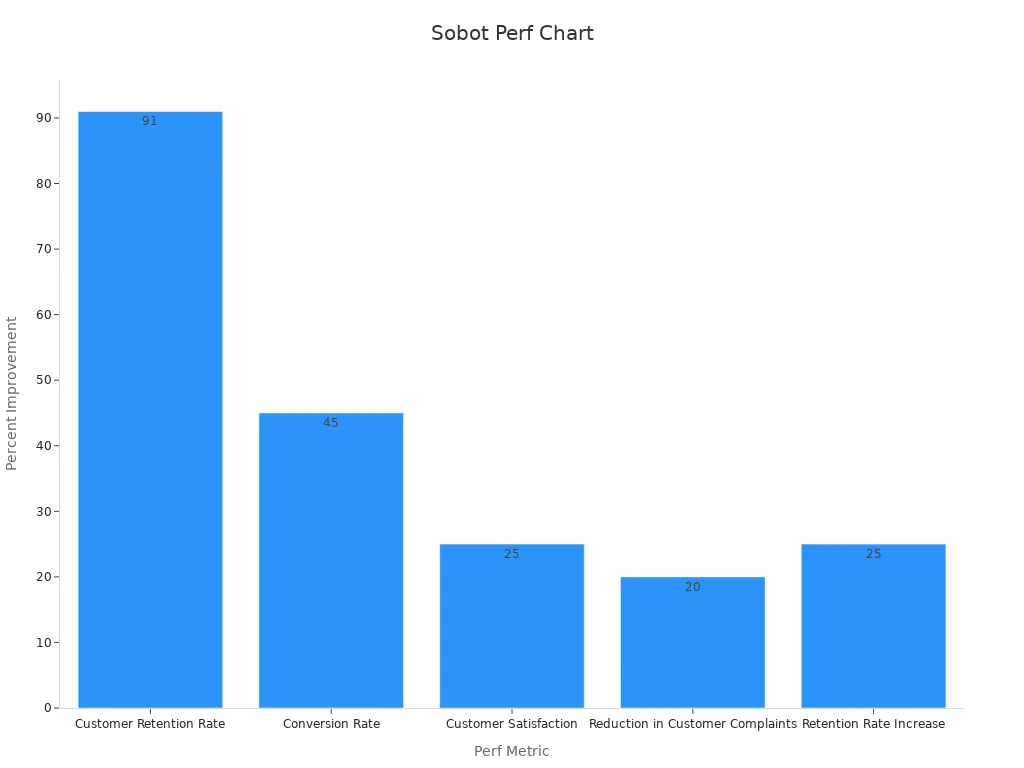
Sobot’s customer experience management framework delivers measurable results. For example, after integrating Sobot’s omnichannel AI strategies, businesses report a 25% increase in customer satisfaction and a 20% reduction in customer complaints. These improvements highlight the strategic value of a robust customer experience management framework.
Sobot’s approach aligns with industry best practices. The company uses customer journey mapping, continuous feedback, and analytics to identify and improve every touchpoint. This customer experience model not only boosts loyalty and retention but also supports sustainable business growth.
Core Components of Customer Experience Management
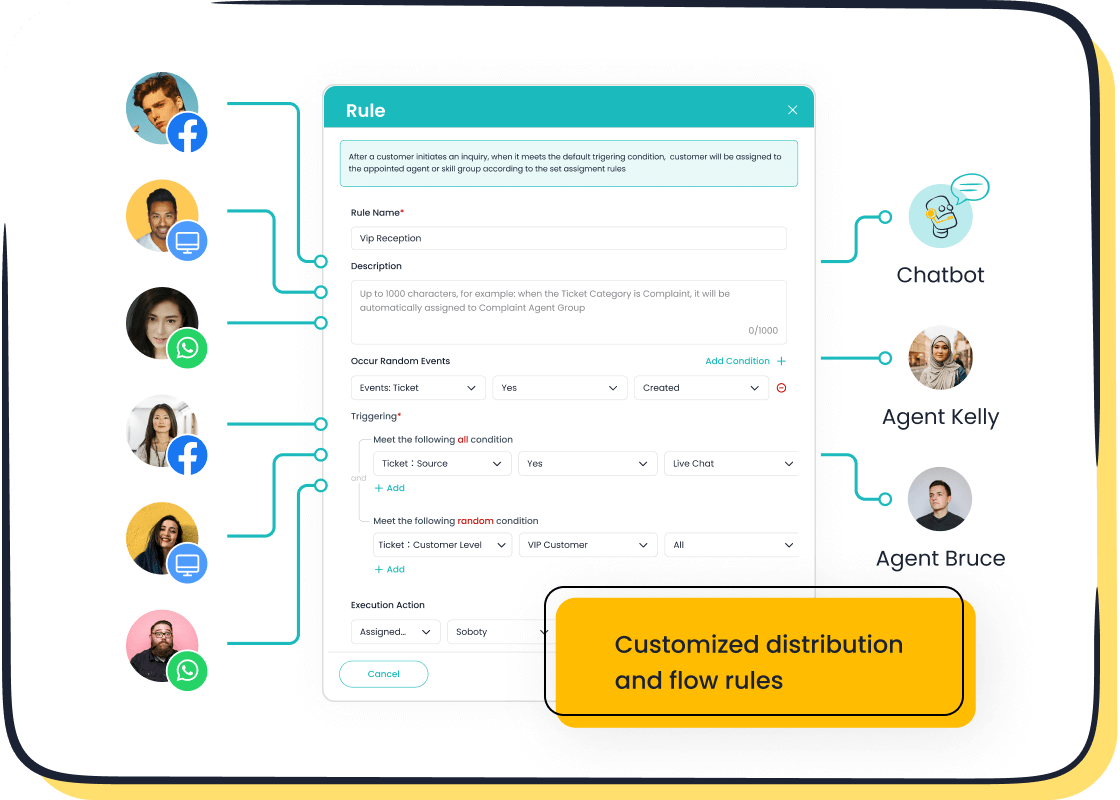
Customer Journey Mapping
Customer journey mapping stands as a foundation for effective customer experience management. This process helps companies visualize every step a customer takes, from first contact to post-purchase support. By mapping the customer journey, organizations can identify pain points, emotional highs and lows, and key moments that shape loyalty.
- Journey mapping uncovers both practical and emotional touchpoints that define satisfaction.
- Qualitative research, such as user interviews, reveals why customers behave as they do.
- Mapping emotions allows companies to find opportunities to delight customers and reduce support costs.
- It highlights friction points and unmet needs, helping prevent churn and improve retention.
A recent study found that 84% of consumers value the experience a company provides as much as its products or services (Salesforce Research). Customer journey mapping also encourages cross-departmental collaboration and supports innovation by aligning teams around customer insights and research.
Voice of the Customer
Capturing the voice of the customer is essential for understanding what customers truly want. Companies use a mix of quantitative and qualitative methods to gather customer insights at scale.
- Customer surveys, such as CSAT and NPS, provide structured feedback on satisfaction and loyalty.
- Passive data collection from live chat logs, social media, and review sites offers unsolicited insights.
- Behavioral data from websites and apps, including click tracking and heatmaps, reveals patterns.
- Advanced analytics tools, like AI-powered sentiment analysis, process large volumes of feedback.
Sobot’s customer feedback systems integrate data from multiple sources, enabling real-time dashboards and visualizations. This approach helps organizations act quickly on customer insights and improve the overall customer experience.
Feedback and Analytics
Feedback and analytics drive continuous improvement in customer experience. Companies that analyze feedback see measurable gains in satisfaction and business results.
- Gallup reports a 21% increase in profitability for organizations that prioritize feedback analysis.
- Airbnb improved customer retention by 20% after implementing a robust feedback system.
- Starbucks used customer feedback systems to launch new products, boosting sales by 30% in some stores.
- McKinsey found that effective use of analytics can increase profitability by up to 40%.
Sobot’s analytics tools evaluate over 150 indicators, helping businesses make informed decisions and personalize service. Combining quantitative and qualitative feedback gives a complete view of customer insights, leading to better experiences and higher satisfaction.
Technology Integration
Technology integration enhances every aspect of customer experience management. Companies track key metrics such as CSAT, NPS, and Customer Effort Score to measure satisfaction, loyalty, and ease of service.
- Integrated platforms unify customer data across all touchpoints.
- AI and automation tools, like Sobot’s omnichannel solution, streamline workflows and improve efficiency.
- Real-time analytics provide actionable insights for agents and managers.
- Automation reduces repetitive tasks, allowing teams to focus on complex customer needs.
By leveraging technology, organizations can deliver personalized experiences, improve operational performance, and drive business growth.
Implementing CX Frameworks in Customer Service
Goal Setting
Setting clear goals forms the foundation of any successful customer experience initiative. Companies begin by defining a vision for how customers should feel and what they should experience at every touchpoint. Leaders use discovery sessions with stakeholders to clarify objectives and remove ambiguities. The SMART framework—Specific, Measurable, Achievable, Relevant, and Time-Bound—guides teams to set actionable goals. For example, a business might aim to increase its Net Promoter Score by 10 points within six months by improving response times.
Actionable goals drive motivation and accountability. They ensure every team member understands what success looks like.
Key steps for effective goal setting include:
- Define a clear objective for customer service efforts.
- Align goals with overall business strategy.
- Empower employees through training and resources.
- Regularly update goals based on evolving customer needs.
- Promote a customer-centric culture across all departments.
- Listen actively to customer feedback for ongoing improvement.
Data Collection
Robust data collection supports every customer experience management framework. Companies use a mix of technology and direct feedback to gather insights. CRM software and Customer Data Platforms (CDPs) store interaction histories and preferences. Experience management platforms map customer journeys and manage feedback. Analytics tools reveal patterns in customer behavior.
Common data collection techniques:
- CRM systems for centralized customer records.
- Feedback and survey tools to capture satisfaction and experience insights.
- Social media monitoring to track sentiment and emerging issues.
- Analytics tracking software for digital interactions.
- Online forms and email campaigns to gather demographic and behavioral data.
Sobot’s omnichannel solution integrates these methods, providing a unified workspace for agents. This approach ensures that every customer interaction, whether on a website, app, or social media, contributes to a comprehensive view of the customer journey.
Customer Segmentation
Customer segmentation enables businesses to personalize the customer experience for different groups. By analyzing demographic, behavioral, and purchase data, companies create actionable segments. These segments allow for tailored marketing, product recommendations, and support strategies.
Benefits of effective segmentation:
- Targeted retention strategies for high-value and at-risk groups.
- Customized journeys and touchpoints based on segment preferences.
- Improved satisfaction by addressing specific needs.
- Continuous feedback and data-driven refinement keep segmentation relevant.
AI and machine learning enhance segmentation by uncovering hidden patterns. Sobot Live Chat uses precise profiling to deliver tailored service, which has led to a 38% increase in conversion rates for businesses.
Continuous Improvement
Continuous improvement ensures that customer experience strategies remain effective over time. Models like DMAIC (Define, Measure, Analyze, Improve, Control), Lean, and PDCA provide structured, data-driven approaches. These models help companies identify pain points, test solutions, and measure results.
Customer feedback serves as a vital source for improvement. Integrating feedback into structured models leads to higher satisfaction and product success.
Key elements of continuous improvement:
- Regularly collect and analyze customer feedback.
- Use data to identify areas for enhancement.
- Test and refine solutions iteratively.
- Empower employees to suggest and implement changes.
- Monitor key metrics such as wait times, satisfaction scores, and resolution rates.
Leadership support and dedicated resources sustain these efforts. Sobot’s analytics tools evaluate over 150 indicators, helping businesses make informed decisions and drive ongoing enhancements.
Sobot Live Chat in Action
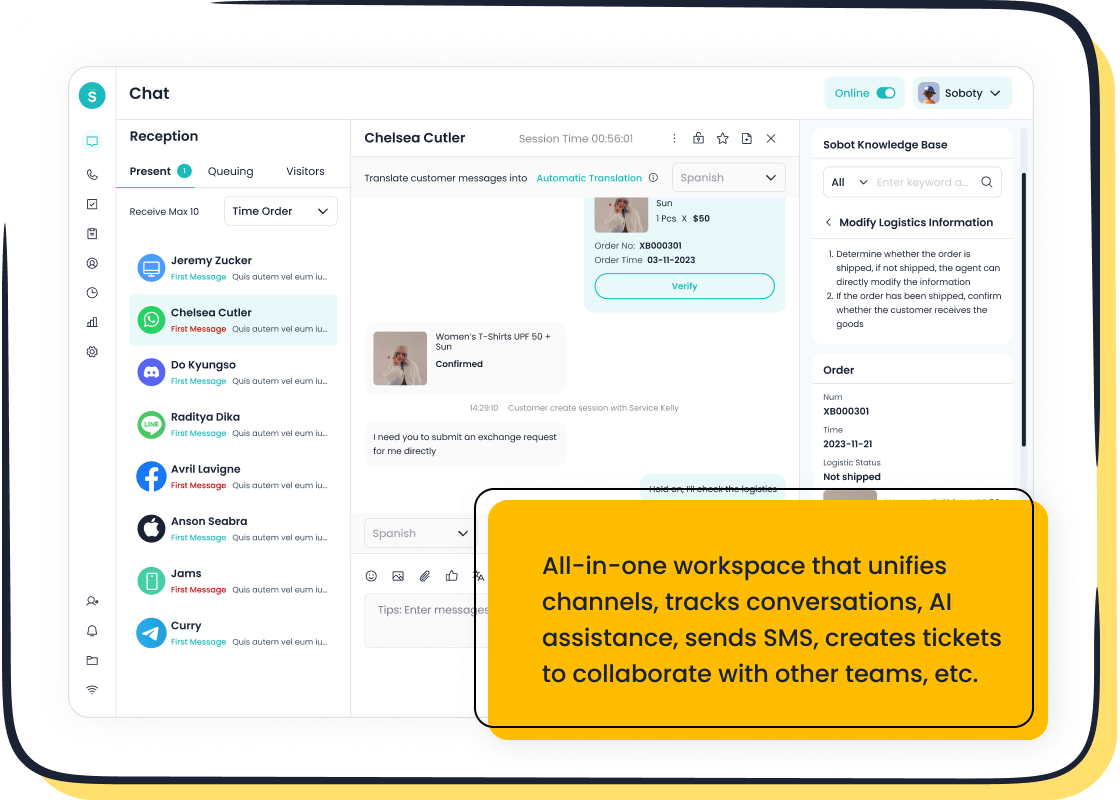
Sobot Live Chat stands as a practical tool for implementing a customer experience management framework. The platform unifies customer conversations from websites, apps, and social media into one AI-powered workspace. Agents access complete customer histories, enabling personalized and efficient service.
| Metric / Company | Statistic / Result |
|---|---|
| Customer Satisfaction (CSAT) | Up to 97% |
| Overall Customer Happiness | 99% |
| Problem Resolution Rate | 85% |
| Positive Feedback Rate | Over 96% |
| OPPO Repurchase Rate Increase | 57% |
| OPPO Positive Feedback Rate | 94% |
Sobot Live Chat’s features include:
- Omnichannel support for seamless engagement.
- AI-assisted tools for faster responses.
- Built-in analytics for data-driven decisions.
- Customer segmentation for targeted service.
- Satisfaction surveys to measure quality.
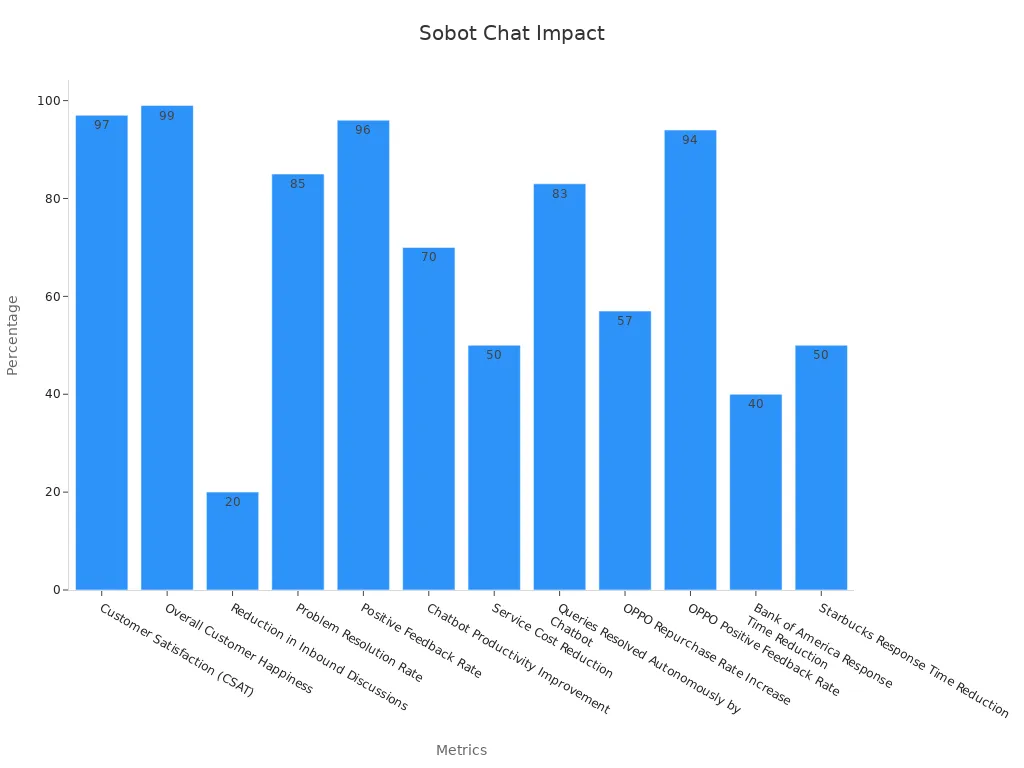
The OPPO customer story highlights the impact of Sobot’s solutions. OPPO faced high inquiry volumes during peak shopping periods. By integrating Sobot’s chatbot and ticketing system, OPPO achieved an 83% chatbot resolution rate and a 94% positive feedback rate. The company also saw a 57% increase in repurchase rate, demonstrating the power of a unified customer experience approach. Sobot’s integration of global channels and business systems improved data accessibility and agent efficiency, leading to higher customer satisfaction and loyalty.
Sobot Live Chat empowers businesses to deliver exceptional customer experiences, reduce costs, and drive growth. Companies like OPPO, Starbucks, and Bank of America have seen measurable improvements in satisfaction, response times, and operational efficiency.
Best Practices for Effective CX Management
Customer-Centric Culture
A customer-centric culture forms the backbone of any strong customer experience strategy. Leading companies like 3M, UPS, Siemens, HubSpot, and Alibaba have shown that putting customers first drives loyalty and business growth. They embed customer-centricity into their corporate culture, align teams around customer outcomes, and use data to personalize experiences. Alibaba, for example, uses AI to analyze buyer preferences and create tailored journeys, building trust and deeper engagement. Companies that adopt these practices see higher satisfaction and a clear competitive advantage.
- Collaboration across departments ensures everyone works toward customer-focused goals.
- Success metrics align with customer outcomes, not just internal targets.
- Technology and insights help teams deliver efficient, personalized service.
A customer-centric approach leads to sustainable growth and stronger brand loyalty.
Omnichannel Solutions
Omnichannel solutions play a key role in delivering seamless customer experience. Businesses that connect with customers across websites, apps, and social media see measurable improvements. Sobot’s omnichannel platform unifies all interactions, making it easy for agents to provide fast, consistent support.
| Metric | Improvement/Change |
|---|---|
| Customer retention | +10% |
| Customer satisfaction | +15% |
| Operational inefficiencies | -12% |
| Global consumer goods market | Growth from USD 2.8T (2024) to USD 3.3T (2031) |
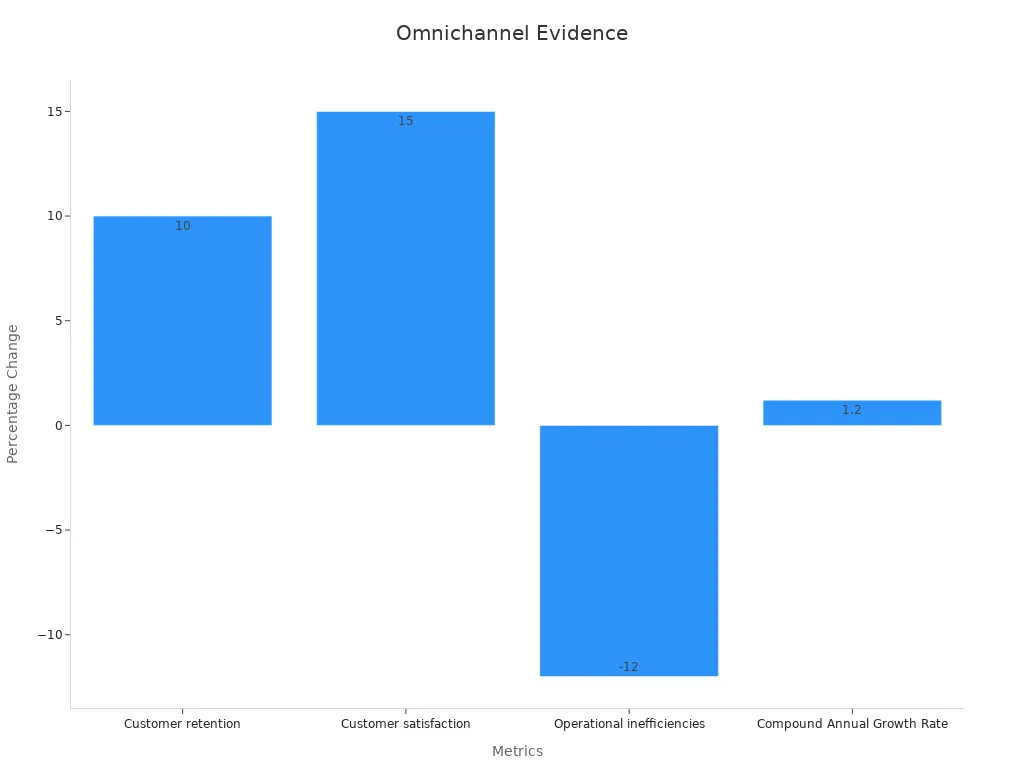
Suning Appliance Company Ltd recruited 500,000 new loyalty program members and doubled online sales after adopting omnichannel strategies. Sobot’s solution helps businesses achieve similar results by integrating all channels and providing real-time analytics.
Measuring Success
Measuring success in customer experience requires clear performance measurement and kpis. Companies track metrics like Net Promoter Score (NPS), Customer Satisfaction (CSAT), and First Contact Resolution (FCR) to evaluate progress. Sobot’s analytics tools help businesses monitor over 150 indicators, making it easier to spot trends and areas for improvement. Regular reviews of these metrics ensure that teams stay focused on delivering excellent customer experience.
Consistent measurement helps companies adapt quickly and maintain high standards.
Empowering Teams
Empowering teams is essential for delivering outstanding customer experience. Training, access to real-time data, and clear communication channels enable agents to solve problems efficiently. Sobot’s unified workspace gives agents the tools they need to respond quickly and personalize every interaction. When employees feel supported and informed, they deliver better service and build stronger customer relationships.
- Ongoing training keeps skills sharp.
- Real-time insights help agents make informed decisions.
- Open feedback channels encourage continuous improvement.
Overcoming CX Management Challenges
Breaking Silos
Many organizations struggle with silos that block effective customer experience management. Teams often work in isolation, which leads to broken service, repeated tasks, and inconsistent customer experiences. Research from Forrester and the American Management Association shows that executives see silos as a major barrier to seamless customer journeys. Customers notice these gaps when they must repeat information or receive different answers across channels. In fact, 89% of retail customers and 66% of business customers have left a company after just one poor experience. Companies can address this by mapping the customer journey and connecting internal culture to customer loyalty. Sobot’s unified contact center platform helps break down these barriers by integrating sales, marketing, and support into one workspace, making customer experience management more effective.
Ensuring Consistency
Consistency remains a key challenge in CX management. When data sits in different systems, customers face fragmented experiences. Poor data quality leads to flawed decisions and inefficiencies. Companies can solve this by adopting data governance frameworks, cleansing data, and using integration tools. Regular audits and validation processes help maintain accuracy. Sobot’s omnichannel solution provides a single view of the customer, ensuring every interaction feels consistent and personalized. This approach supports customer experience management frameworks by standardizing service across all touchpoints.
Data Privacy
Data privacy has become a top concern in customer experience management. As companies collect more customer data, they must protect it with strict access controls, encryption, and regular security audits. Compliance with regulations like GDPR and CCPA is essential to maintain trust and avoid reputational damage. Sobot prioritizes data security by offering robust privacy features and supporting compliance needs. Companies should also align privacy practices with customer preferences and use technology to manage legal requirements efficiently. These steps help build trust and support strong customer experience management frameworks.
Change Management
Change management is vital for successful CX frameworks. Employees may resist new processes or technologies, slowing progress. Clear communication, ongoing training, and leadership support help teams adapt. Incentives and gradual implementation can ease the transition. Airbnb, for example, unified global data and improved customer experience by investing in advanced tools and a customer-centric approach. Sobot supports change management by providing user-friendly solutions and training resources, making it easier for teams to adopt new customer experience management practices. Continuous improvement and strong leadership ensure lasting success in CX management.
Effective customer experience management frameworks drive measurable business value. Companies see higher loyalty, retention, and revenue by using structured approaches. Leadership teams benefit from regular CX reports, expert insights, and visual presentations that link improvements to business results.
- The Clootrack’s 102 CX Experts report highlights the importance of CX metrics like NPS and CES for decision-making.
- Customer stories and feedback keep CX a top priority for executives.
Case studies show that brands such as Amazon and Tesla achieve over 90% customer satisfaction by using advanced analytics and journey mapping. Sobot Live Chat empowers teams to unify customer conversations, improve satisfaction, and support growth. Leaders in customer service, support, and ecommerce can start or refine their CX initiatives today for lasting success.
FAQ
What is a customer experience management framework?
A customer experience management framework is a structured model that guides companies in designing, delivering, and measuring every customer interaction. Businesses use this framework to improve loyalty, retention, and revenue. Sobot’s solutions help organizations implement these frameworks efficiently.
How does Sobot support customer experience management frameworks?
Sobot provides an all-in-one contact center platform that unifies customer data, automates workflows, and offers omnichannel support. Companies using Sobot report up to a 38% increase in conversion rates and higher customer satisfaction, demonstrating the value of a strong customer experience management framework.
Why is measuring customer experience important?
Measuring customer experience helps companies identify strengths and weaknesses. Metrics like Net Promoter Score (NPS) and Customer Satisfaction (CSAT) show how well a customer experience management framework works. According to Forrester, companies with strong measurement see better business results.
Can a customer experience management framework improve customer retention?
Yes. A well-designed customer experience management framework increases customer retention by addressing pain points and personalizing service. For example, OPPO used Sobot’s framework and saw a 57% increase in repurchase rates, proving the impact of effective management.
What industries benefit most from customer experience management frameworks?
Industries such as retail, finance, gaming, and education benefit greatly from a customer experience management framework. Sobot serves over 10,000 brands across these sectors, helping them boost satisfaction, reduce costs, and drive growth through advanced customer experience management frameworks.
See Also
Effective Strategies For Managing Call Center Quality
Best Voice Of Customer Tools To Use In 2024
Comparing Leading Voice Of Customer Software Solutions
